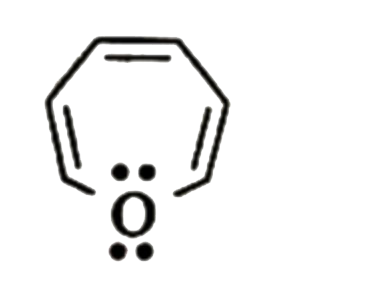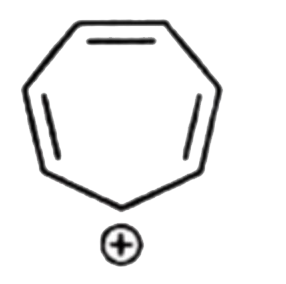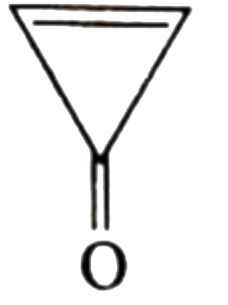Which one of the following compound is not a planar ?




The correct Answer is:A
To determine which compound is not planar, we need to analyze the aromaticity of each compound based on Huckel's rule. Huckel's rule states that for a compound to be aromatic, it must have a certain number of π (pi) electrons, specifically following the formula 4n+2, where n is a non-negative integer (0, 1, 2, ...).
1. Identify the Compounds: List the compounds given in the options (let's assume they are A, B, C, and D).
2. Check for Aromaticity:
- For each compound, determine the number of π electrons present.
- Use the formula 4n+2 to check if the number of π electrons fits this rule.
3. Analyze Option A:
- Assume Option A has 8 π electrons.
- Plugging into Huckel's rule: 4n+2=8.
- Rearranging gives 4n=6 or n=1.5, which is not an integer.
- Since n is not an integer, Option A does not follow Huckel's rule and is therefore not aromatic and not planar.
4. Analyze Option B:
- Assume Option B has 6 π electrons.
- Using Huckel's rule: 4n+2=6.
- Rearranging gives 4n=4 or n=1, which is an integer.
- Therefore, Option B is aromatic and planar.
5. Analyze Option C:
- Assume Option C also has 6 π electrons.
- Using Huckel's rule: 4n+2=6.
- This gives n=1, confirming it is aromatic and planar.
6. Analyze Option D:
- Assume Option D has 6 π electrons.
- Using Huckel's rule: 4n+2=6.
- This gives n=1, confirming it is aromatic and planar.
7. Conclusion: Since Option A is the only compound that does not follow Huckel's rule and is not planar, the correct answer is Option A.
Final Answer:
Option A is not a planar compound.
- For each compound, determine the number of π electrons present.
- Use the formula 4n+2 to check if the number of π electrons fits this rule.
- Assume Option A has 8 π electrons.
- Plugging into Huckel's rule: 4n+2=8.
- Rearranging gives 4n=6 or n=1.5, which is not an integer.
- Since n is not an integer, Option A does not follow Huckel's rule and is therefore not aromatic and not planar.
- Assume Option B has 6 π electrons.
- Using Huckel's rule: 4n+2=6.
- Rearranging gives 4n=4 or n=1, which is an integer.
- Therefore, Option B is aromatic and planar.
- Assume Option C also has 6 π electrons.
- Using Huckel's rule: 4n+2=6.
- This gives n=1, confirming it is aromatic and planar.
- Assume Option D has 6 π electrons.
- Using Huckel's rule: 4n+2=6.
- This gives n=1, confirming it is aromatic and planar.
Option A is not a planar compound.
Similar Questions
Knowledge Check
Which one of the following compounds is not aromatic?
A B
B C
C D
D
Which of the following compound will not show tautomerism ?
A2,2-DimethylpropanalB2,2-Dimethyl-1 nitropropaneCAcetyl AcetoneDBenzophenone
Which one of the following compounds is a peroxide?
View SolutionWhich one of the following compounds is a peroxide?
View SolutionWhich one of the following compounds is most acidic
View SolutionWhich one of the following compounds is most acidic
View SolutionWhich one of the following compounds is a superoxide?
View SolutionWhich one of the following compounds does not show tautomerism ?
View Solution
